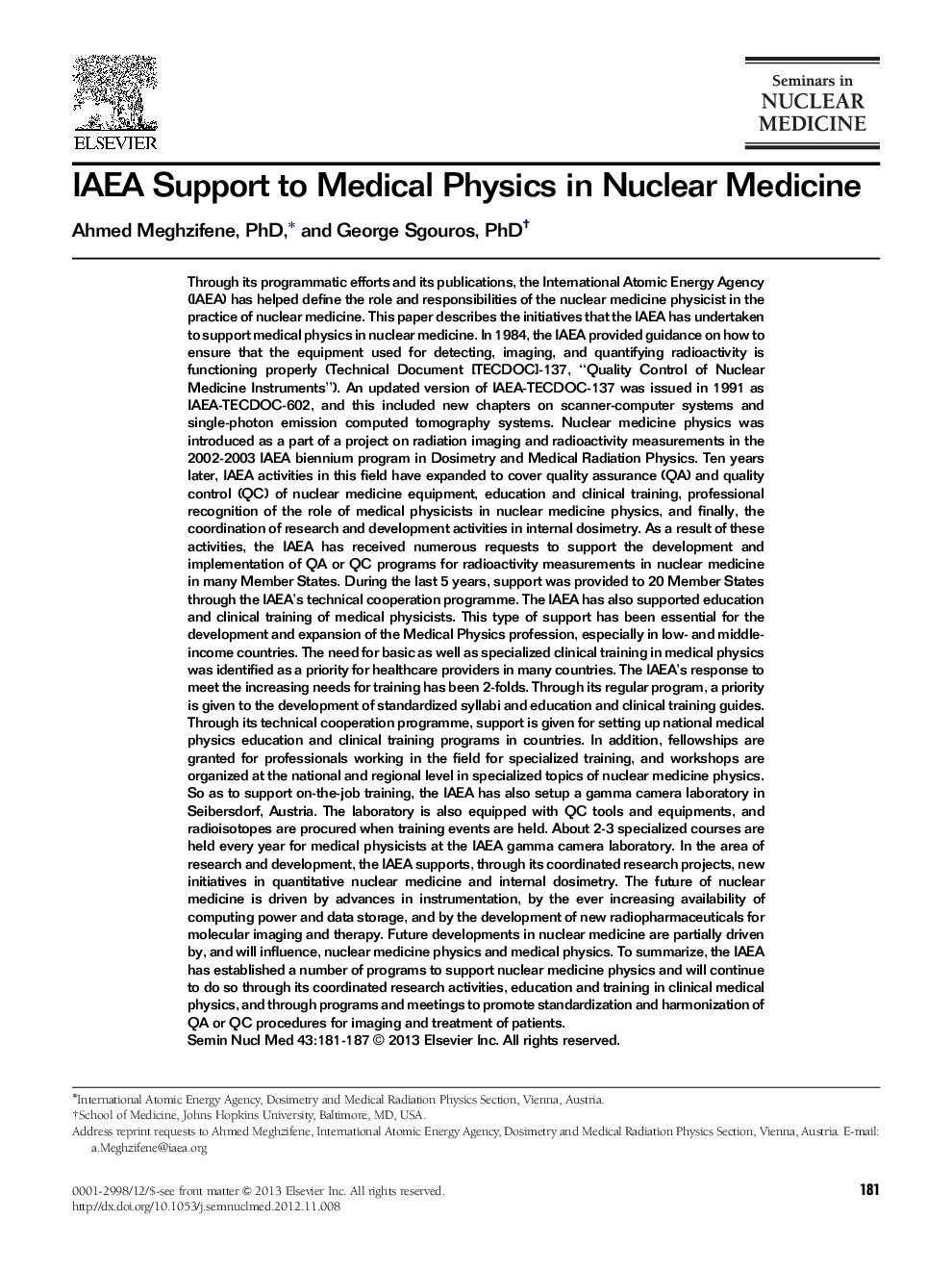| Article ID | Journal | Published Year | Pages | File Type |
|---|---|---|---|---|
| 4251169 | Seminars in Nuclear Medicine | 2013 | 7 Pages |
Through its programmatic efforts and its publications, the International Atomic Energy Agency (IAEA) has helped define the role and responsibilities of the nuclear medicine physicist in the practice of nuclear medicine. This paper describes the initiatives that the IAEA has undertaken to support medical physics in nuclear medicine. In 1984, the IAEA provided guidance on how to ensure that the equipment used for detecting, imaging, and quantifying radioactivity is functioning properly (Technical Document [TECDOC]-137, “Quality Control of Nuclear Medicine Instruments”). An updated version of IAEA-TECDOC-137 was issued in 1991 as IAEA-TECDOC-602, and this included new chapters on scanner-computer systems and single-photon emission computed tomography systems. Nuclear medicine physics was introduced as a part of a project on radiation imaging and radioactivity measurements in the 2002-2003 IAEA biennium program in Dosimetry and Medical Radiation Physics. Ten years later, IAEA activities in this field have expanded to cover quality assurance (QA) and quality control (QC) of nuclear medicine equipment, education and clinical training, professional recognition of the role of medical physicists in nuclear medicine physics, and finally, the coordination of research and development activities in internal dosimetry. As a result of these activities, the IAEA has received numerous requests to support the development and implementation of QA or QC programs for radioactivity measurements in nuclear medicine in many Member States. During the last 5 years, support was provided to 20 Member States through the IAEA's technical cooperation programme. The IAEA has also supported education and clinical training of medical physicists. This type of support has been essential for the development and expansion of the Medical Physics profession, especially in low- and middle-income countries. The need for basic as well as specialized clinical training in medical physics was identified as a priority for healthcare providers in many countries. The IAEA's response to meet the increasing needs for training has been 2-folds. Through its regular program, a priority is given to the development of standardized syllabi and education and clinical training guides. Through its technical cooperation programme, support is given for setting up national medical physics education and clinical training programs in countries. In addition, fellowships are granted for professionals working in the field for specialized training, and workshops are organized at the national and regional level in specialized topics of nuclear medicine physics. So as to support on-the-job training, the IAEA has also setup a gamma camera laboratory in Seibersdorf, Austria. The laboratory is also equipped with QC tools and equipments, and radioisotopes are procured when training events are held. About 2-3 specialized courses are held every year for medical physicists at the IAEA gamma camera laboratory. In the area of research and development, the IAEA supports, through its coordinated research projects, new initiatives in quantitative nuclear medicine and internal dosimetry. The future of nuclear medicine is driven by advances in instrumentation, by the ever increasing availability of computing power and data storage, and by the development of new radiopharmaceuticals for molecular imaging and therapy. Future developments in nuclear medicine are partially driven by, and will influence, nuclear medicine physics and medical physics. To summarize, the IAEA has established a number of programs to support nuclear medicine physics and will continue to do so through its coordinated research activities, education and training in clinical medical physics, and through programs and meetings to promote standardization and harmonization of QA or QC procedures for imaging and treatment of patients.
